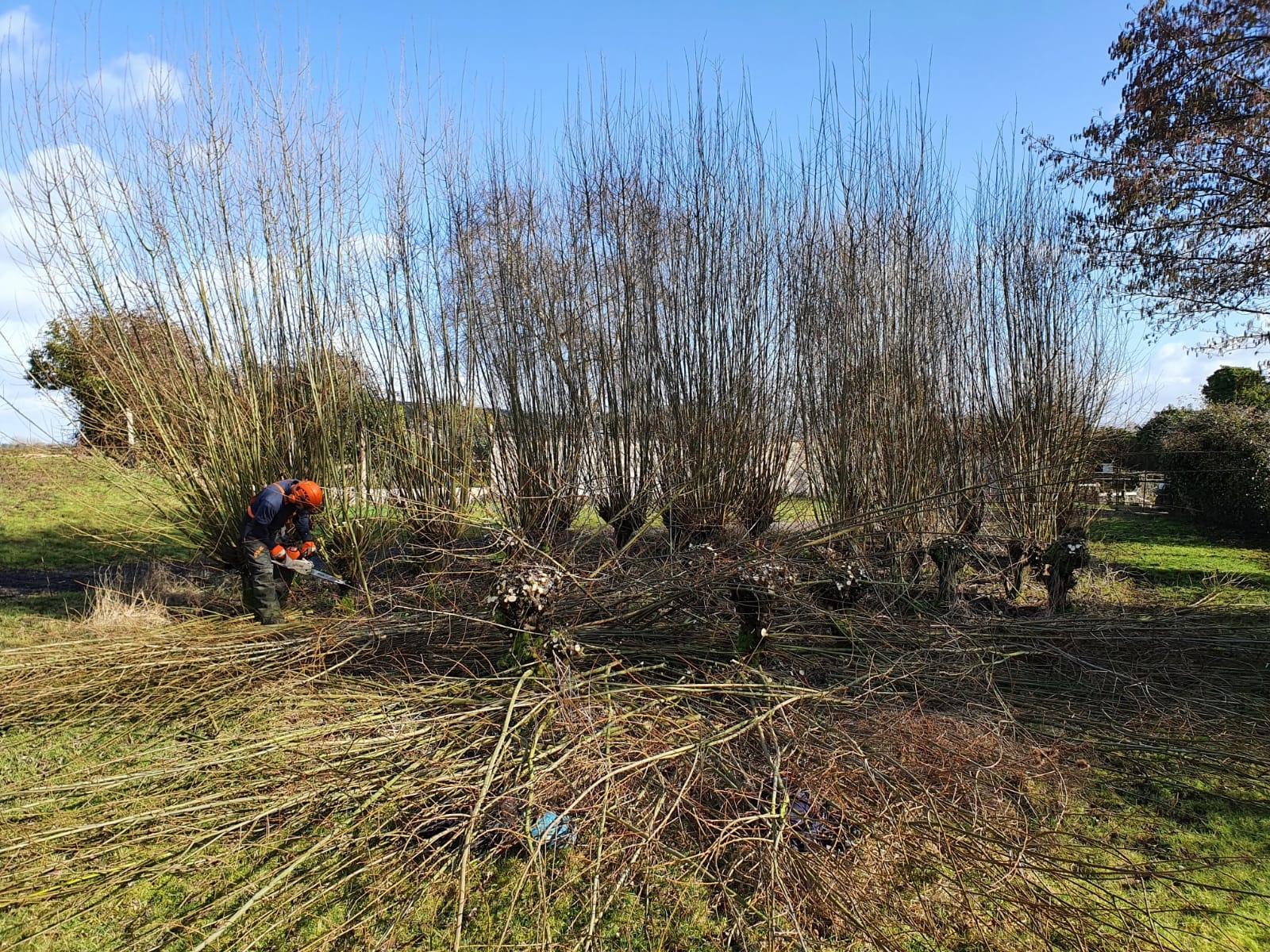A second attempt
As we end the week the first of our Bewick's Swans have found a window in the weather to make a second attempt to migrate
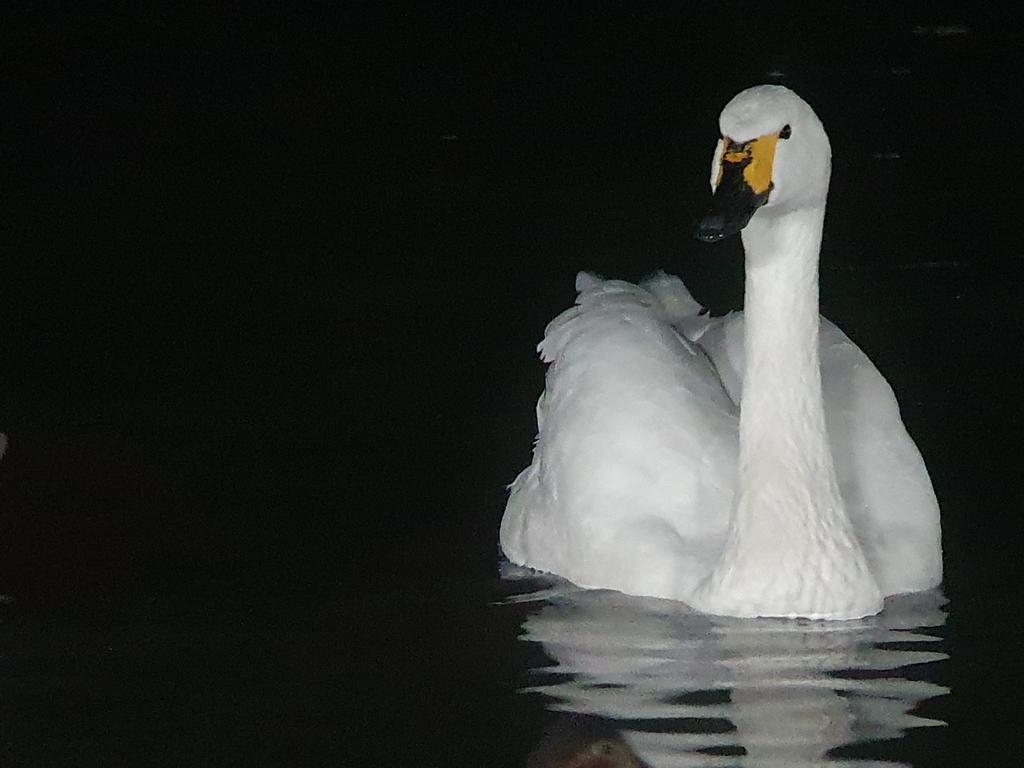
As we end the week the first of our Bewick's Swans have found a window in the weather to make a second attempt to migrate.
Bewick's Swan update
On Thursday evening the roost on the Rushy contained the 75 birds who have been here all week. On Friday morning we arrived to find just 50 birds remaining, with some already out on the Tack Piece before the morning feed at 8am. Our two families remain, Sarindi and Sarind with their two juveniles, and our single parent Chapillary with her single youngster. The weather for the weekend doesn't look great but by early next week we should have seen the majority of the bird depart us for another season.
At least one Bewick's Swan was sound-recorded over Wallington in south London early on Thursday morning, so this may have been a bird from the south coast near our colleagues at Arundel Wetland Centre moving north to the Ouse Washes, where the bulk of the UK wintering population is usually found. The birds will likely feed up here before heading across the North Sea to the Netherlands and Germany, and then onwards to Russia! Another bird was sound-recorded just north of Norwich on Tuesday morning and could have been moving locally or beginning that amazing journey.
Other wildfowl
Our duck numbers are also dropping as birds start to depart for the breeding season, but their departure is perhaps less noticeable as we can't recognise individuals like our Bewick's Swans, and there are thousands in a flock for some of the specices. That said counts from the Wetland Bird Survey (WeBS), which took place on Sunday, looked more like late March than the middle of February. As we move towards the breeding season we will be keeping a close eye on the number of males and females present for our breeding species, they being Mallard, Gadwall, Shoveler, Tufted Duck, Shelduck and Pochard. This can help us get an early indication of who might be breeding where, especially for our rarer species. And it won't be too long before we see our first Garganey of the year! This migratory duck winters in Africa and returns to Europe to breed. We record the species annually on spring and autumn migration, and if we're lucky they may even stay and try to breed.
Unlike our winter swans, the White-fronted Geese should be around for a few more weeks yet as they usually depart in March. After a short stint in the Tin Shed Ground field the birds have moved back to the Goose Fields just north of the Tack Piece, coming in to the latter field for a lunchtime bathe and drink. The Pink-footed Goose is still with them and we've been afforded some excellent views in the last couple of days in the afternoon sunshine. We only wish we could share it with our visitors! The Cackling Goose has also been seen this week.
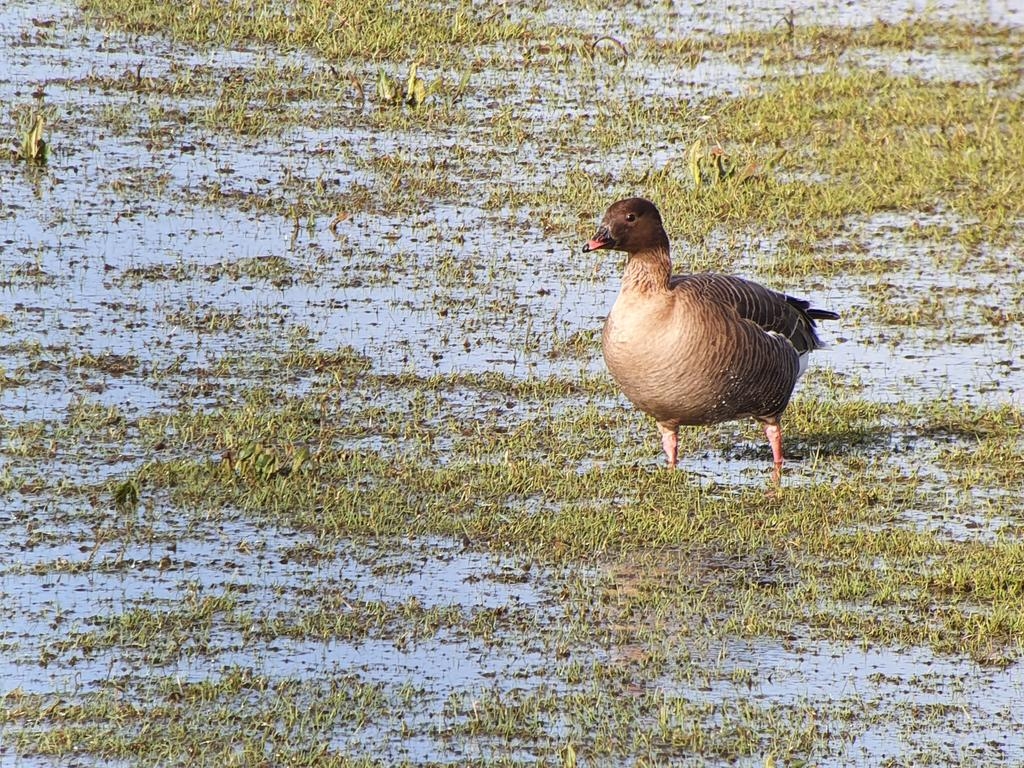
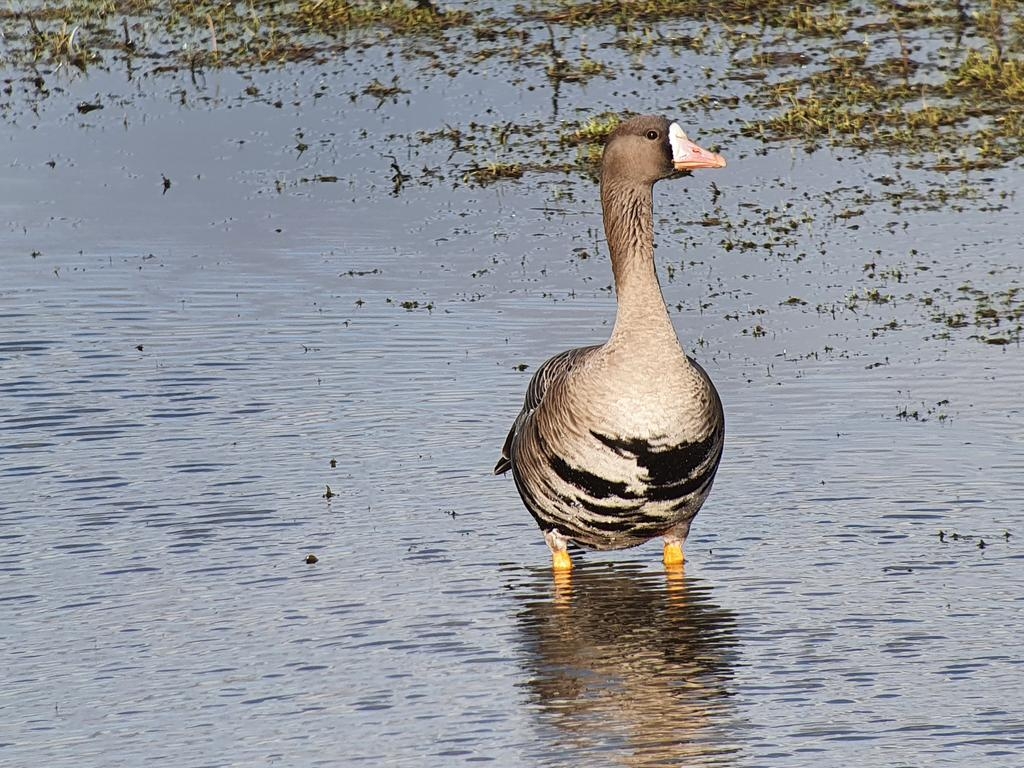
Waders
Various species have been competing for our attention this week as our winter flocks continue to enjoy the reserve. With the recent rainfall we've also seen good numbers of birds using the roadside fields between the Centre and the canal. Over 1000 Dunlin have regularly been feeding on the Tack Piece, forming a tight fast-moving blizzard when alarmed or under attack from a bird of prey. With them have been over 2500 Golden Plover, around 150 Black-tailed Godwit, up to 200 Curlew plus the smaller number of Redshank and Ruff. Lapwing are also still present in good numbers, but the feeling of spring is definitely in the air as they look to be more spread out, getting a little fiesty and thinking about breaking into that full on display flight and call.
Our breeding waders are also gathering pace with 16 Avocet now back on the South Lake and several pairs of Oystercatcher now setting up territories around the reserve, not least the two pairs claiming the South Lake. Every year they spend a few weeks arguing before both settling down to breed with one pair taking the causeway at the Discovery Hide and the other moving to the duck marsh outside the Hogarth Hide.
At least five of the headstarted Curlew have been seen this week, and on Friday another colour-ringed bird was noted on the Tack Piece. We await to hear where this bird has originated from.
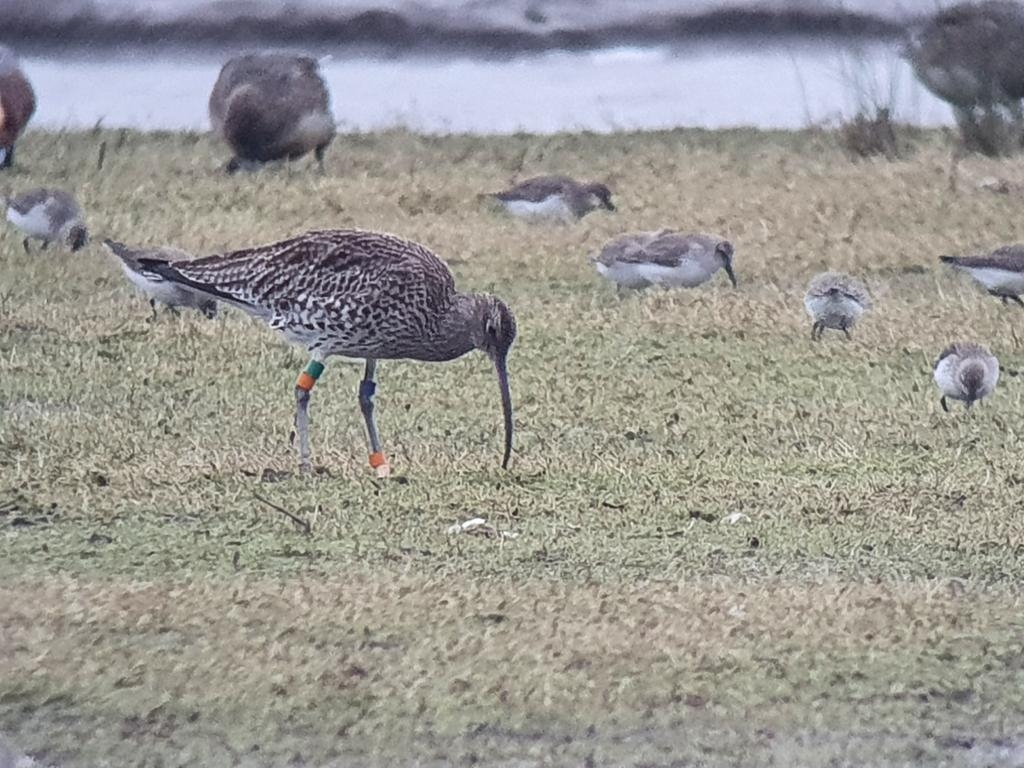
Friday was also a good day for spotting Snipe with the raised water levels encouraging them out to feed. The Top New Piece, viewed from the Zeiss Hide, had at least 62 birds on show and earlier in the week surveys as part of our farmland bird work through the agri-environment scheme found 134 Snipe in the restored Goose Fields!
Other notable species
The Thursday afternoon sunshine bought out the birds of prey with Merlin, Peregrine and Goshawk all seen on the Dumbles. All have been making the waders and wildfowl nervous whilst out on the hunt. Our Reserve Placement Student Kate managed to snap a photo of the action as a juvenile Peregrine hunted the Dumbles and Tack Piece, even trying to bother the White-fronted Geese who were not amused.
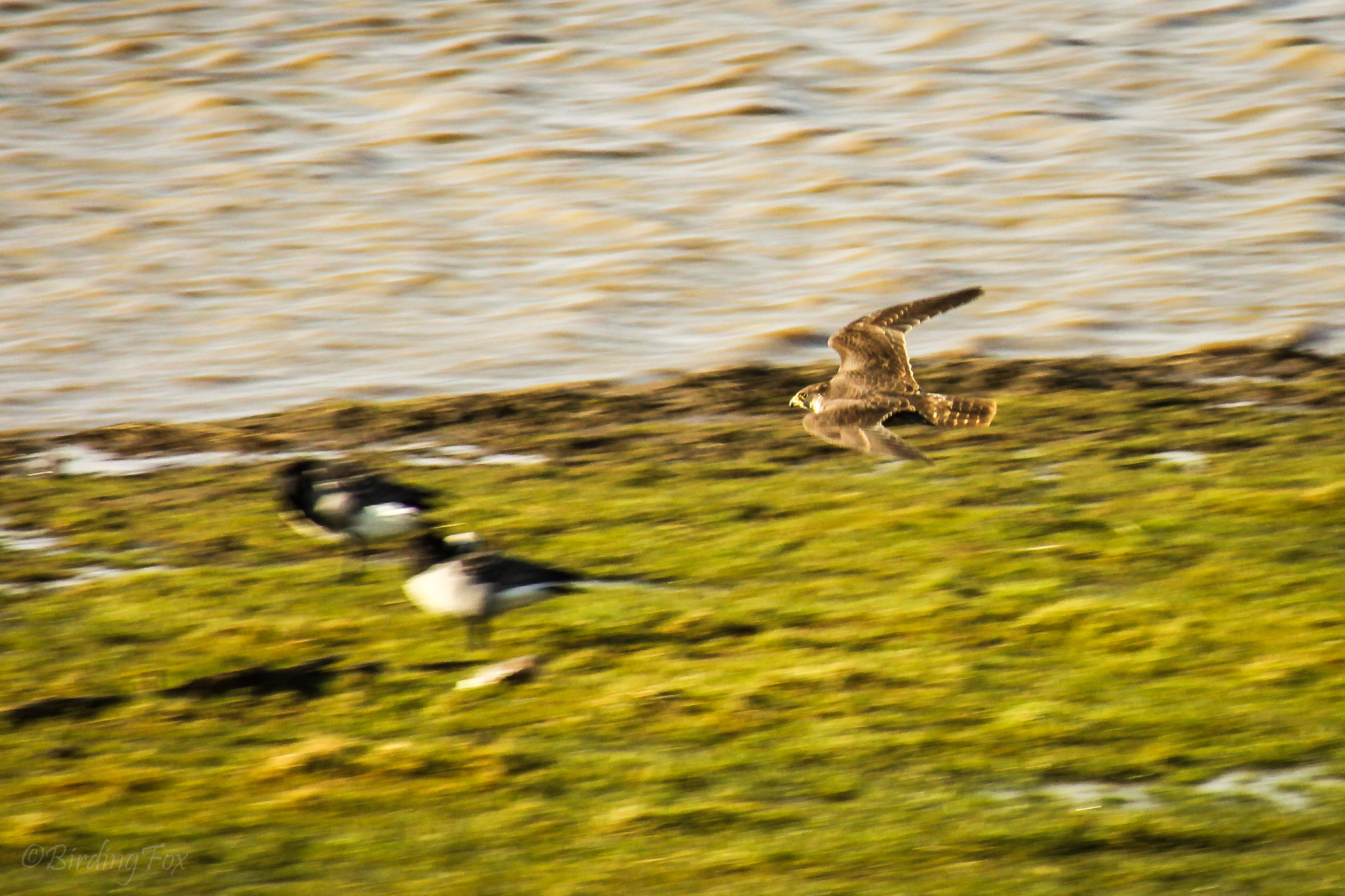
Buzzard and a Kestrel have also been seen throughout the week but our biggest surprise was the return of a Marsh Harrier we saw in 2020. The individual has red wing-tags coded I7 (letter i) and was originally with us from at least 19th October until 7th December 2020. The bird was then seen at Chew Valley Lake in Somerset on 9th December. We then saw the bird again on the reserve on Tuesday this week (16th February 2021), touring the northern fields. In the last couple of weeks we've now seen three different Marsh Harriers in the area, a male, female and this wing-tagged bird who was ringed as a male chick in the nest in East Anglia on 9th June 2020.
You may remember in last week's update we mentioned a German colour-ringed Black-headed Gull on the South Lake. We've heard back that this bird was ringed on 28th April 2017 as an adult male on a small island, Inseln Böhmke und Werder, near the border with Poland on the German north-east coastline. The bird was seen back here in 2018, 2019 and 2020 but this is the first sighting from a winter season and outside of Germany.
Another week of management work has passed on the reserve too, and we've gone from exploiting cold and frozen conditions to avoid disturbance to our wildlife, to digging out the waterproofs in what seems to have been a very wet week.
Our staff and volunteers have been hard at work despite the weather, this week helping to clear another section of perimeter fence around the Decoy Wood. The work will allow us to manage the area more easily in the future and keep our fence fox-proof to protect the captive birds in our Living Collection and those wild birds breeding inside the fence such as our Avocet. Whilst in the area we also took the opportunity to remove the old tree guards from the woodland before starting work on the annual coppice in the Withy Bed. This year the cut material is in high demand across the site as we look to replace willow screens around the site ahead of our reopening in the spring. We also hope to be able to pass some of the material on to a local school for a woven-willow outdoor learning space.
